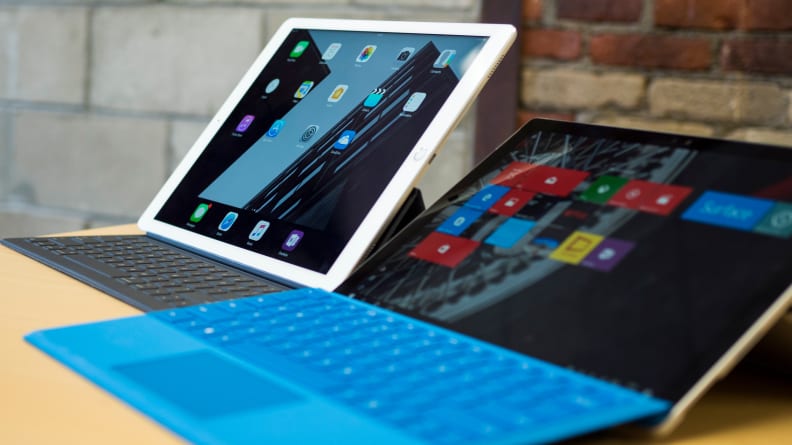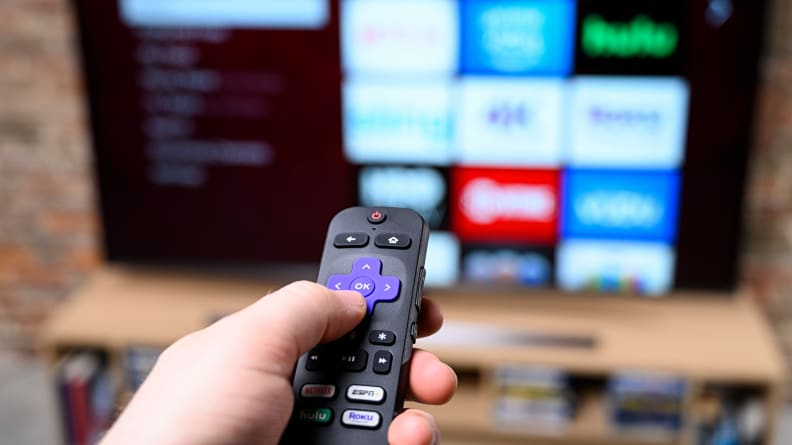Working from home? Here's how to turn your iPad or TV into a second monitor
Expand your horizons with multiple work screens
Products are chosen independently by our editors. Purchases made through our links may earn us a commission.
More folks are working from home these days than perhaps ever before, but for those of us without a dedicated home office, the transition to domestic work life can be overwhelming—especially if you don't have an extra computer monitor.
Fortunately, there's a couple of ways you can hack together a second-screen experience without buying a new monitor, by turning your iPad or TV into a second monitor. They're not altogether perfect solutions, but they're perfect to use in a pinch. Here's what you need to know.
How to turn an iPad into a second monitor

It's easy to connect a new Mac and a new iPad with Apple's Sidecar feature, but folks hoping to connect a PC to an iPad will have to work a bit harder to make the connection.
The easiest way to use an iPad as a second screen is with a Mac utility called Sidecar, but there's a catch: this method is only available to folks with a relatively new Mac and a relatively new iPad. You can check out Apple's full system requirements for Sidecar for a complete rundown, but the basic requirements are a newish iPad with iPad OS 13 and a Mac laptop or workstation with macOS Catalina. The connection itself can be done wirelessly or wired—either via WiFi or the iPad's charging cable.
Once you've determined that your Mac and iPad support Sidecar, connecting the two is as simple as selecting the AirPlay icon in your Mac's menu bar and selecting the appropriate iPad. You can use your Mac's System Preferences to finely tune your second screen experience.
Obviously, this method is limited to Mac users, since it requires a handshake between two Apple devices. PC users, unfortunately, will have to settle for options that are either less elegant or more expensive. Additionally, if you own older Apple devices that don't support Sidecar, you'll need to explore alternatives, too.
Several third-party apps exist that can bridge a connection between an older Mac or PC and an iPad, the most popular being Duet Display, which can be unlocked with a one-time fee of $9.99—all you need is a USB connection. There are also more robust packages you can upgrade to that carry higher, recurring subscription fees, but offer expanded functionality. Duet Display Air, for example, will land you the ability to connect your iPad wirelessly.
How to turn a TV into a second monitor

Using your TV as a second screen is easy—provided you have all the right equipment.
Just about every TV these days prioritizes HDMI connections over all else, so the simplest place to start when it comes to connecting your laptop or desktop to your TV is with an HDMI cable that plugs directly into one of your TV's inputs.
This is easy enough if you have an HDMI input on your computer, but not many computers do, which means you'll need an adapter to get the job done. First, identify the type of ports you have on your laptop or desktop.
• For computers with a Mini DisplayPort: These ports look like standard USB-B ports with the corners cut on the bottom and can often be found on older laptops. A Mini DisplayPort-to-HDMI cable typically supports full HD (1080p) resolution and is available pretty much wherever cables are sold. For our money, we love the Mini DisplayPort to HDMI cable from AmazonBasics, which is available in 3-, 6-, 10-, and 15-foot variants. It's not fancy but it certainly gets the job done.
Get the AmazonBasics Mini DisplayPort to HDMI cable (6 ft.) from Amazon for $10.99
• For computers with a USB-C port: Newer computers—like the most recent MacBooks—tend to be outfitted with a slew of USB-C ports and little else. These tiny, elongated oval-shaped ports look puny but pack a powerful punch. This USB-C to HDMI cable from Uni is an easy, affordable way to connect a computer to a TV when the only option is USB-C. It supports up to 4K resolution at 60 Hz and bypasses the need for a dongle.
Get the Uni USB-C to HDMI cable (6 ft.) from Amazon for $18.99
• For computers with a VGA port: VGA ports (almost always blue) can be found on older computers, and feature three rows of 15 pin connectors. VGA cables often (but not always) connect with the help of a pair of tiny screws on either side of the cable. If you're trying to connect your computer to a TV by way of your computer's VGA port, your best bet is to buy a VGA to HDMI converter, though we must warn you: the setup is quite hairy.
Essentially, these converters also need to plug into one of your computers USB ports for power. If you want audio support, a third cable needs to run from the converter's 3.5mm port to your computer's 3.5mm headphone port. Just keep in mind that VGA is a format from 1987, and it's likely the resolution of a second screen in this format won't be very detailed. However, if this is your only option, this VGA to HDMI converter dongle from Foinnex is your best bet—it's got a solid reputation on Amazon and won't set you back too much.
Get the Foinnex VGA to HDMI converter from Amazon for $13.99
Once your computer is connected to your TV by way of one of these cables, all you need to do is select the appropriate input on your TV. As with all cable situations, make sure the cables you're buying are long enough to accommodate your household setup.
